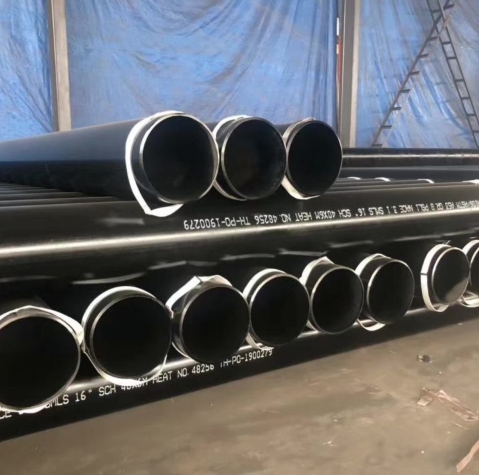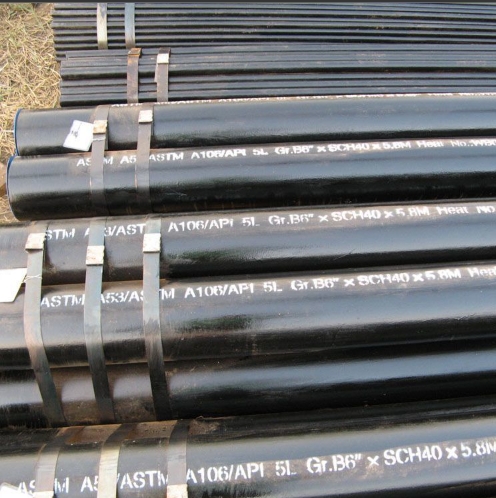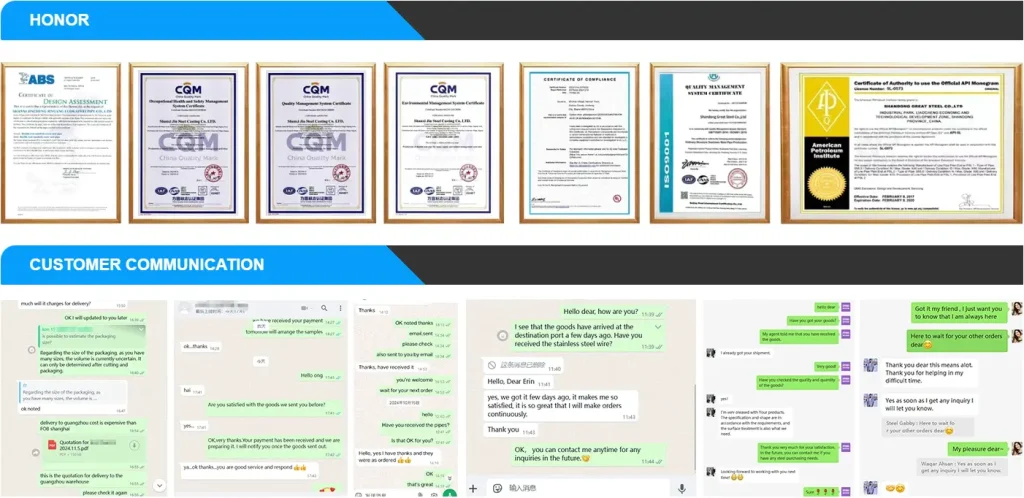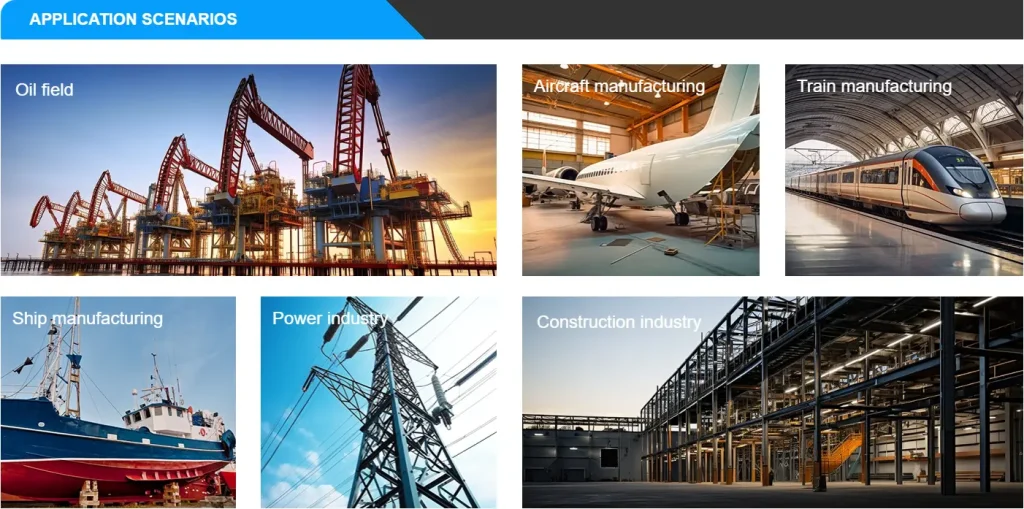Product Overview
ASTM A333 (seamless) and ASTM A334 (welded) pipes are carbon/alloy steel tubes designed for extreme low-temperature services, such as LNG, ammonia, ethylene, and other cryogenic fluids typically between –196 °C and +343 °C. Grades 1–11 vary by toughness and composition, with Grades 3, 6, and 9 commonly used in industrial refrigeration for their toughness and ductility at low temperatures
Key Specifications
-
Standards: ASTM A333/A334, ASME B36.10
-
Dimensions (ASTM A530 tolerance):
-
Seamless: OD 10–762 mm; tolerance ±1%, WT +15/–12.5%
-
Welded: OD 508–1 219 mm; tolerance ±0.75%, WT +10/–5%
-
-
Mechanical Example (Grade 6):
-
Yield ≥240 MPa, Tensile ≥415 MPa, Elongation ≥30%, Charpy V ≥34 J at –45 °C
-
-
Impact Toughness: 27–120 J @ –196 °C (per ASTM A370)
-
Pressure Rating: 15–120 MPa (2 175–17 400 psi)
-
Certifications: NACE MR0175, PED, ISO 3183
Material Composition (Grade 3 Example)
-
C ≤ 0.19%, Mn ≤ 0.90%, P/S ≤ 0.025%, Si ≤ 0.37%, Ni 3.18–3.82%
-
Similar limits apply across other grades
Manufacturing & Tests
-
Seamless: Rotary piercing + cold drawing; Welded: SAW with 100% radiography
-
Heat treatment: Normalizing ~900 °C for refined grain structure
-
Quality Control: Ultrasonic testing (ASTM E213), hydrostatic test @1.5×MAOP, Charpy impact tests, packaging with VCI paper
Advantages
-
Reliability at low temperatures – Maintains ductility and strength down to –196 °C
-
High toughness – Charpy V-notch >20 J at limit temps (e.g., ≥27 J at –196 °C)
-
Cost-effective – Up to ~40% cheaper than stainless steels like 304L for cryogenic use
-
Weldable and formable – Can be pre-heated (~95 °C) to avoid hydrogen cracking
-
Certified for critical services – Meets NACE, PED, ASME, and code regulations
Applications
-
LNG pipelines & storage: e.g., 323 mm OD × 12 mm WT, Grade 6, for –162 °C methane
-
Ammonia service: 168 mm OD × 8 mm WT, Grade 3, for –33 °C liquid ammonia
-
CO₂ injection: 114 mm OD × 6 mm WT, Grade 9, for supercritical CO₂ (~7.4 MPa at 31 °C)
-
Cryogenic/ref refrigeration/power plants: structural, equipment, polar facilities
Common Grades & Their Use
-
Grade 1: For general low-temp down to –45 °C; C ≤ 0.30%, yield ≥205 MPa, tensile ≥380 MPa (Charpy ≥27 J at –45 °C)
-
Grade 3: Higher alloyed (Ni ~3%), toughness to –100 °C
-
Grade 6: Most widely used for cryogenic service to –45 °C; balance of strength, ductility & cost
-
Grade 9: For intermediate low temps ~ –75 °C
Quick Recap
-
What it is: Low-temp carbon/alloy steel pipes
-
Specs: Seamless/welded, OD ~10–1 200 mm, yield ~205–240 MPa, tensile ~380–415 MPa, impact-tested to extreme cold
-
Why it’s great: Reliable at cryogenic temps, cost-efficient, weldable, globally certified
-
Where it’s used: LNG, ammonia, CO₂ systems, refrigeration units, cold‑climate infrastructure
Let me know if you’d like help picking a specific grade, size, or testing/certification plan!
Luo Kaiwei Steel Company is a multi-ISO certified steel manufacturer specializing in carbon steel plates, pipes and galvanized coils since 2010. Competitive prices and ASTM/JIS compliant. Get instant quotes for bulk orders and global shipping support.








